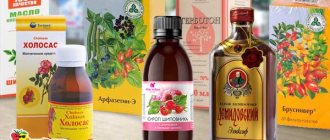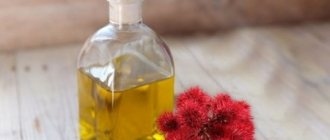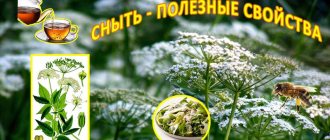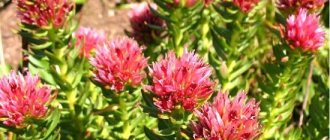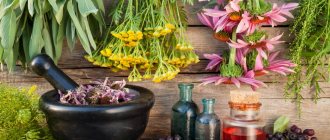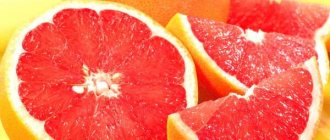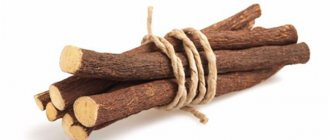There are contraindications, consultation with a specialist is required
Probably, many, walking through the expanses of the fields of our vast Motherland, noticed on their way an attention-grabbing plant that looked like a small Christmas tree. And few people thought, or perhaps did not even realize, that the healing properties of horsetail are very important for human health and are applicable both for treatment and for prevention against various kinds of diseases.
Indeed, in truth, horsetail is a plant unique in its benefits, possessing a huge amount of macro- and microelements beneficial to the human body, especially rich in silicon, necessary for full life, in particular for the correct functioning of the metabolic process. But horsetail is not only useful for this; its healing properties are very diverse.
Description
As soon as the spring sun shines, horsetail begins to sprout in the gardens, which is classified by our summer residents as a weed.
Horsetail likes to grow in acidic soil, this is a signal to start alkalizing the soil
The plant, which belongs to the higher spore species, has a height of 10 to 40 cm, its stems end in a spore-bearing pistil in the form of a spikelet, in which seeds - spores - are located. As soon as they are scattered, the stem dies and leaf development begins. They have a tetrahedral shape, a bright green tint, and branch well on the lower parts of the plant. Horsetail branches are directed upward, towards the sun.
The root system of the plant culture goes deep into the ground, almost a meter, this makes it easy to find food and water. Nodules in the form of balls are located on the roots, and substances that provide nutrition to the above-ground part accumulate in them.
This amazingly hardy crop can tolerate both low and high temperatures, light frosts and unbearable heat; it adapts to drought and thrives in rainy summers.
Horsetail likes to grow in sandy, acidic soil. If it once settled in your garden, we can assume that you have problems: firstly, it’s time to alkalize the soil and add ash or slaked lime, and secondly, a harmful weed has settled on your site, which will be quite problematic to get rid of.
There are several types of horsetail, but only one of them can be eaten and used as a medicine. Only a plant with branches pointing upward is healing. It is better not to touch the rest, otherwise the treatment may turn into an exacerbation of the disease. There have been cases when horses in villages died after eating the “wrong” horsetail contained in hay.
People call the plant by different names: field pine, nursery grass, honeydew, water pine, horsetail, morel, Sokhatin grass.
It is difficult to imagine that once upon a time, at the dawn of centuries, these plants looked like giant trees, which occupied a vast territory on Earth with powerful horsetail forests. It is thanks to them and giant ferns that today we have such a mineral as coal. Today we see only short and rather puny green bristles, which complement the fragrant meadow herbs.
The most dangerous is the marsh horsetail, which grows in swamps. It can be distinguished by its thick stem and few branches. Horsetail must not be confused with meadow horsetail; this can have a very negative impact on health.
Meadow and swamp horsetail contain poison, which causes the death of domestic and wild animals
Medicinal raw materials
Collection item. Green, fruitless stems collected throughout the summer.
Collection and processing of raw materials. Green, barren, branchy summer shoots are used for medicinal purposes. The grass is harvested in the summer (June - August), plucking or cutting it with sickles or knives, and when it is thick, it is mowed with scythes without the coarser ground parts. Before drying, impurities of other plants are selected, including non-medicinal horsetail species, which are difficult to distinguish after drying.
Drying. Dry the grass in attics under an iron roof or sheds with good ventilation, spreading a layer of 5-7 cm on paper or fabric.
Quality of finished raw materials. The raw material consists of dried grey-green, grooved, jointed stems up to 30 cm long, with twigs. Humidity - no higher than 13%'. The finished raw material must contain: crushed parts of horsetail - no more than 10%; foreign impurities: organic (including other types of horsetails) - no more than 5%, mineral - no more than 0.5%. The smell is weak and peculiar. The taste is sour. Output of dry raw materials. Approximately 20-25%. Shelf life. 4 years.
Chemical composition
Horsetail contains many substances that are used in the pharmaceutical industry. Among them are:
- alkaloids;
- saponin equisetonin;
- flavonoids;
- aconitic, oxalic and malic acids;
- fatty and essential oil;
- silicic acid salts;
- tannins, resins;
- vitamins;
- carotene and others.
What nutrition is indicated for arthrosis?
A comprehensive treatment regimen for osteoarthritis always includes nutritional recommendations. A thoughtfully designed diet allows you to avoid excess weight and provides the body with the necessary supply of vitamins and minerals. Antioxidants are of particular importance for joints, namely vitamins A and E, omega-3 fatty acids. Also, in order for the body to produce chondroitin and glucosamine, a person must receive sufficient amounts of vitamin C and manganese.
TOP 10 products that must be present in the diet for arthrosis:
- Fresh vegetables.
- Seasonal fruits.
- Greenery.
- Lean fish.
- Whole grains.
- Dairy products with low fat content.
- Various nuts.
- Low-fat butter.
- High quality olive oil.
- Jelly.
With arthrosis, it is important to get enough vitamin C so that chondroitin and glucosamine are produced
Useful properties of horsetail
Horsetail has been known for its healing properties since the time of Avicenna, the famous physician of antiquity, who mentioned it in his medical works as a remedy that effectively stops blood and cleanses the body of toxins and harmful substances.
In the 40s of the last century, the study of horsetail began in medical institutions around the world, after which the medical community proved the unconditional benefits of horsetail for human health.
In scientific works, horsetail looked like a panacea for many diseases of various types.
In fact, it is a strong antioxidant, antiexudative, diuretic and antifungal agent, and has an antispasmodic effect. The importance of the plant in the pharmaceutical industry can hardly be overestimated, since today many drugs are being created that are based on substances from its composition.
Common horsetail has become a real breakthrough in pharmacology and traditional medicine
Healing effect
Doctors use preparations containing horsetail to treat urolithiasis and kidney disease.
The power of its effect surpasses even kidney tea. But it should be remembered that medications based on it cannot be used for nephritis, since some substances are irritants to the kidneys. When diagnosing diseases such as heart and pulmonary failure, edema, horsetail helps to effectively expel excess fluid from the body and thereby alleviate the patient’s condition.
Other properties:
- it has astringent property;
- stops inflammatory processes;
- removes lead and other heavy metals from the body;
- it significantly reduces blood sugar levels;
- in small doses it has a positive effect on the reproduction of collagen and bone tissue;
It is not recommended to use horsetail in large doses.
Contraindications, harm to plant health
It is strictly unacceptable to give medications with this plant to children under 3 years of age. It is not recommended to take remedies (pharmacy or homemade) with horsetail if:
- heart or kidney failure;
- individual intolerance to plant components;
- jade;
- pregnancy;
- lactation;
- the presence of chronic inflammatory diseases of various etiologies, especially in the acute phase;
- nephrosis;
- intense internal bleeding.
Harm from treatment with horsetail can only occur if the approach to treatment is incorrect. In other cases, if the dosage is strictly observed, there should be no ailments.
Sometimes mild side effects are possible such as:
- red rashes on the skin;
- itching;
- redness and swelling of the epidermis;
- hives;
- erythema;
- angioedema (rare);
- anaphylactic reactions (rare).
These are only those manifestations of adverse reactions that are possible from the immune system. But other organs, in particular the gastrointestinal tract, can also respond negatively to horsetail treatment. In this case, the negative consequences of therapy will manifest themselves:
- nausea;
- stomach pain;
- diarrhea;
- vomiting;
- constipation;
- colic, flatulence;
- bloating.
On the part of the nervous system, horsetail therapy can cause:
- daytime sleepiness;
- depression or, conversely, increased mental excitability;
- temporary impairment of cognitive functions;
- night insomnia;
- dizziness;
- headache;
- prostration;
- tremor of the limbs.
But the most dangerous is poisoning from a plant that is classified as poisonous. But, fortunately, this herb is not potentially life-threatening, although an overdose of drugs based on it can cause symptoms, with which the patient may have to be taken to the hospital.
See also:
Ledum marsh - medicinal properties and contraindications, indications for use

